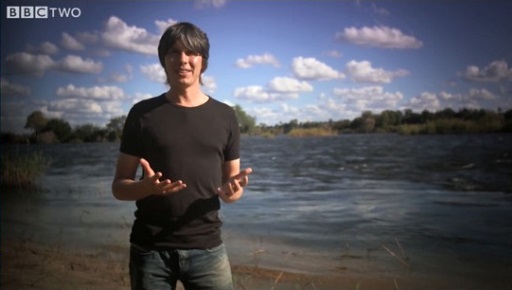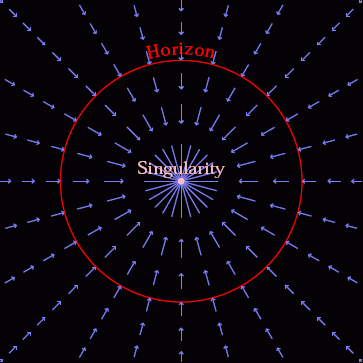7 Black holes
You’ve probably heard of black holes. Put very briefly, a black hole is an object – perhaps a collapsed star – so massive that not even light can escape its gravitational pull. The idea dates back to the late 18th century, but the theory was only properly developed with the advent of general relativity.
The radius of a black hole (known as the Schwarzschild radius) is the distance from its centre at which its escape velocity – the minimum speed necessary for a body to escape the gravitational pull – is equal to the speed of light. For example, if the mass of the Sun were compressed into a black hole, its Schwarzschild radius would be just 3 kilometres. For the Earth, it would be just 9 millimetres. It’s named after Karl Schwarzschild, a German astronomer who was one of the first scientists to use general relativity to understand the gravitational field around stars.
The imaginary surface surrounding the black hole at the Schwarzschild radius is known as the event horizon. Objects can fall inwards through the event horizon but nothing can ever come out, because nothing can move through space faster than the speed of light. That means that once a black hole forms, perhaps from the collapse of a massive star at the end of its life, it can draw in other material and grow to be very large indeed. Some black holes are believed to have a mass several billion times that of the Sun.
So, light cannot escape a black hole as the escape velocity is too high. By comparison, the escape velocity of the Earth is 11 km/s. An object thrown into space faster than this will never fall back down again. Now, this might suggest an inaccurate mental image of light trying to get out of a black hole and falling back in. That’s not what happens. Think instead of the space around a black hole flowing into the hole – much like water going down a drain, but from all directions. The flow gets faster closer to the hole, reaching the speed of light at the event horizon. Light emitted at the event horizon travels through space at the speed of light, but space is flowing into the hole at the same speed, so the light makes no outward progress. As nothing can move through space faster than light, anything (or anyone) that crosses the event horizon is swept down the hole with no hope of escape. Figure 6 demonstrates this idea visually.
The physicist Brian Cox develops a similar analogy in the following video, explaining how a waterfall helps us visualise what happens at the event horizon of a black hole.


